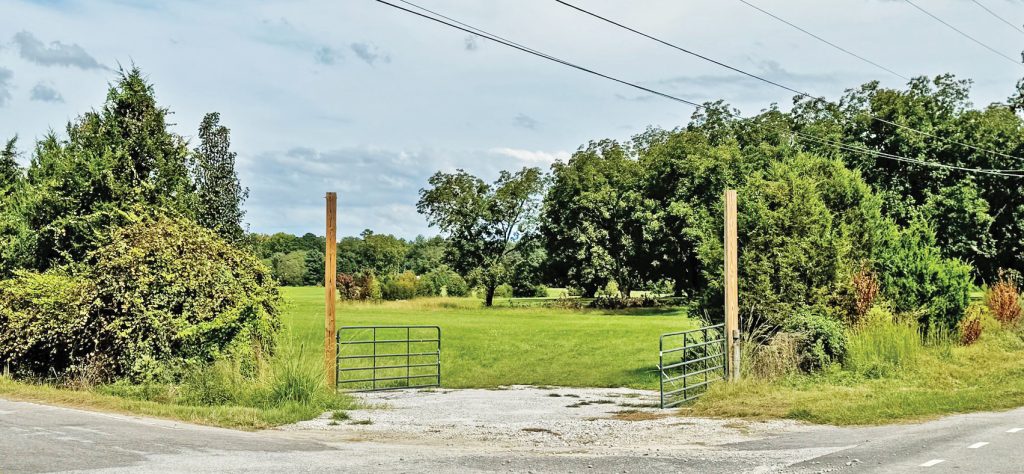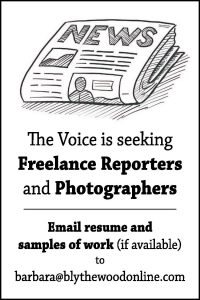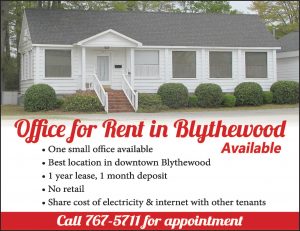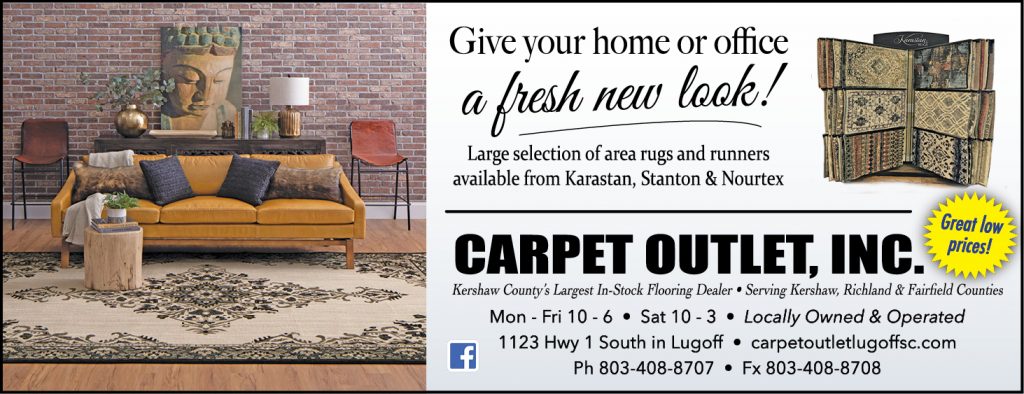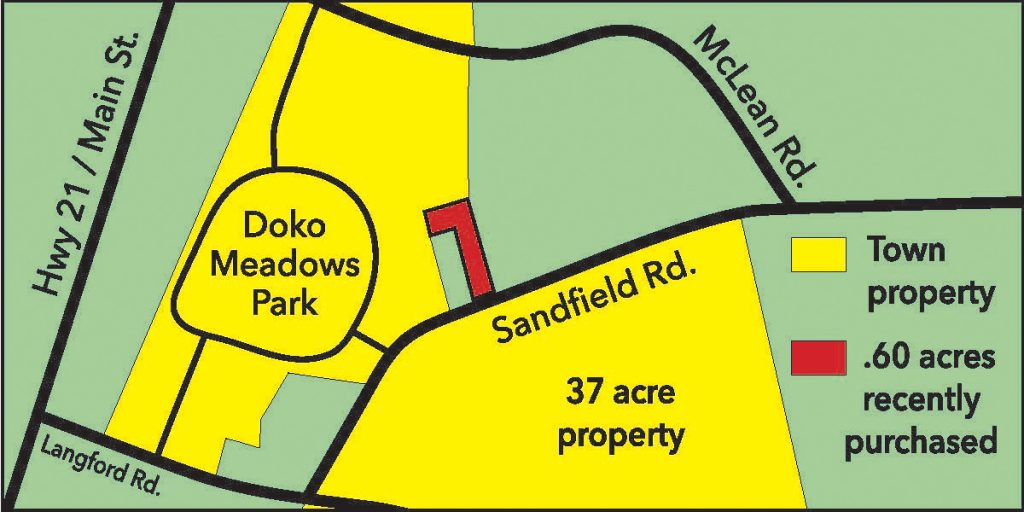
BLYTHEWOOD – Discussion of a design contract led to a broad conversation among members of the Blythewood Town Council about green space, commercial development, and how best to plan and fund the town’s growth going forward.
On the agenda at Monday night’s council meeting was a $10,000 expenditure to develop design plans for a proposed commercial outparcel on a 37-acre tract of land owned by the town.
Located on the corner of Sandfield and Langford roads, the parcel was sought after by housing developers but was instead sold to the town for development of a park, former co-owner of the property Frankie McLean told council.
The project will design options for the originally planned 6-acre outparcel and also look at the potential to incorporate mixed-use commercial development on up to 15 acres of the property.
“The conversation was: Keep it as much green as possible,” said Mayor Sloan Griffin, pointing to examples of walkable shopping villages and the kind of out-of-box thinking that could incorporate commercial and green space.
Town Administrator Daniel Stines said the design process is an important step toward developing retail on the site; once a design is approved, a retail strategy group can be employed to help town leaders identify what type of retail businesses to recruit.
It quickly became apparent that the council members were at odds over how best to use the land – and how it should fit into the town’s overall development strategy.
“At the end of the day, we’ve got to grow. We’ve got to get bigger,” said Mayor Pro-Tem Donald Brock, who called for the development of 10-15 acres instead of the original 6 – in part to help fund the town.
And that’s not the only place where he says town leaders need to think bigger.
“If you look at the town of Blythewood, there’s not very much land left within the town limits to develop,” Brock said.
“We can have land ready and zone it to attempt to lure businesses. The other way that we can do it… is if we annex large parcels to the town, rezone them for whatever we would like or the owner would like or some sort of mutual understanding.”
This, he said, could boost the town’s existing sources of revenue – business licenses and hospitality and accommodations tax – as development occurs rather than taxing residents, which would surely be unpopular.
“I don’t know if there’ll be anymore hotels on this side of the Interstate, but I’ll bet you a dollar to a dime there’ll be a hotel across the Interstate at some point, if not two,” he said. “It will happen at some point, given the influx of people that are coming to the community simply to work,” he said.
“We’ll probably need additional restaurants, we’ll need additional commercial space, we’ll need additional professional services. Where are they going to go? Well, from my perspective, the best place to keep them is inside the town limit because then we will be able to continue to draw that revenue and fill up our coffers.”
Council members Erica Page and Rich McKenrick, however, said that on the land being discussed, the town should stick to its original plan to develop only 6 acres as a retail outparcel – and be intentional about how it’s developed.
“Green space is a shortage, definitely, in our area,” said Page.
“We’ve got people today walking in the parking lot here, we’ve got kids that do need a place to be able to play ball and have all those team sports…. I would hate to give up that type of green space for a chain box retail store.”
McKenrick was a little more direct, stating that designing options to increase the commercial development project from 6 acres to 10, 12, or 15 “has a yucky feel to it.”
“I really don’t want the public to get the feeling of a bait and switch here,” McKenrick said. “I just don’t think we’ve done enough due diligence with the public, and I think the backlash is going to be far greater than we think. And I’m good with 6 acres. That’s what we said at the beginning.”
Mayor Griffin said the design work is simply an “extra lens” through which the retail project and the things town residents are asking for can be viewed.
“This is just simply for them to look at and draw out that vision to keep the park there but do an overlay for a walkable Blythewood [retail] village type of concept,” he said. “Nothing’s set in stone; it just gives us another look at what’s there.”
Frankie McLean, a resident and co-owner of the land before it was sold to the Town, got up to reiterate what she feels is the importance of green space, which she said was heavily requested when the town surveyed residents.
“The community spoke, and they would like more green spaces. I think it would be remiss to start adding more commercial [development] to this beautiful piece of property,” said McLean, whose family property adjoins the land being discussed.
“It was purchased seven years ago because someone wanted to put town homes on it and the McLean family just could not tolerate that, so the land was purchased,” she said.
“We rejected those [who sought to buy it for commercial development]. We offered it to the town at what we considered a very fair price in good faith that what the citizens asked for would happen, and the citizens asked for green space,” she said.
“You can build a shopping center anywhere. You cannot grow what we have across the road, and I just want y’all to please take that into consideration. I am emotional because this is a part of our town, and if we lose that, we will never get that back.”
As for funding, she said, “We have a nice big company coming in. Hopefully they’ll help take part in that and help with some funding, and we’ll be glad to work on some grants as well.”
The council voted 3-2, with McKenrick and Councilwoman Andrea Fripp opposed, to go forward with the planned design work.
$1,030,609 For Soccer Complex
Also at Monday night’s meeting, the council voted to approve bids on two significant projects: $1,030,609 for a 9-field soccer complex and restroom pavilion and $76,825 to replace the roof on town hall.
Town Administrator Daniel Stines said that roughly $77,000 for roof replacement is part of the money budgeted for updates to the historic building, along with $20,000 spent on mold mitigation and $90,000 on building repairs.
“With all things added, that leaves us $13,000 in our budget, and we feel that leaves us in pretty good shape for bringing the house [where town hall is located] up to modern standards for today,” Stines said.
He said mitigation of the mold problem is now complete, with a “clear bill of air quality” that has enabled staff to return to working in the building.
